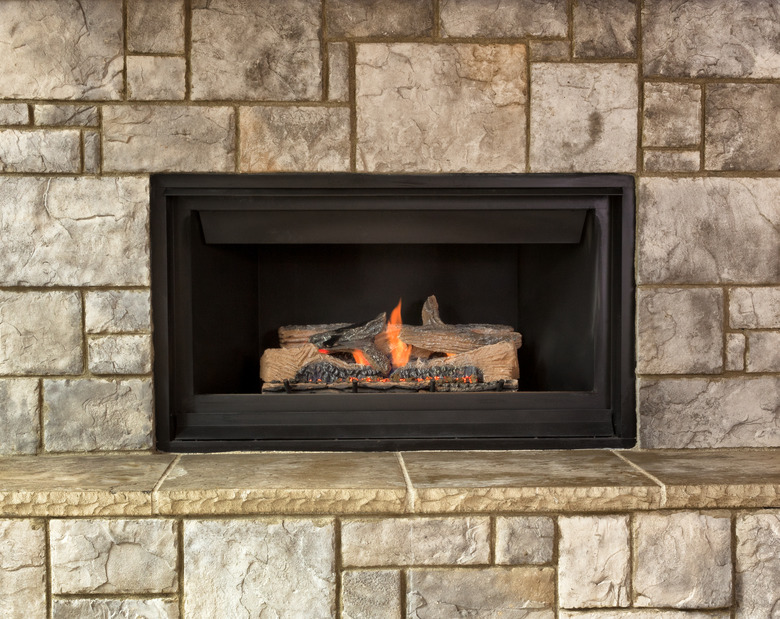Can A Propane Fireplace Cause Carbon Monoxide?
Carbon monoxide is a deadly gas that results from burning different types of materials and gases. More than one-third of Americans heat their homes primarily with fireplaces, stoves or other similar appliances. Fireplaces can provide heat and ambiance to a room, but if not used properly, they can be health hazards that can turn deadly whether wood or gas is used. Propane fireplaces should be used properly and serviced at least annually to ensure safety.
Tip
A propane fireplace produces carbon monoxide as part of the combustion process, which can enter your home if the fireplace is not properly installed and vented.
Carbon Monoxide From Fireplaces
A propane fireplace emits carbon dioxide due to the normal process of combustion. As the gas burns, carbon monoxide is formed as the by-product. It is impossible to tell without a carbon monoxide detector whether the gas is in your home because it is odorless and colorless. Carbon monoxide detectors should be installed on each floor of your home and tested regularly to ensure that the batteries work.
Propane Fireplace Safety
A traditional propane fireplace should always be vented outside. Failure to properly vent a fireplace causes the carbon monoxide to enter the home instead of outside and can result in carbon monoxide poisoning and death in a matter of minutes. Regular chimney and fireplace cleaning and inspections each year ensure that they remain open and unblocked. Always consult a qualified professional to inspect and clean your fireplace and chimney. Always leave the damper open when the fireplace is in use for proper ventilation.
Ventless Propane Fireplaces
A more modern option is a ventless propane fireplace, which is designed to burn the fuel so efficiently that it doesn't need a flue. It burns the fuel cleanly with a regulator that mixes the propane and air, creating reduced fumes. Unlike traditional propane fireplaces, which have a fresh air intake to pull in oxygen, a ventless unit uses the oxygen in the room, which can cause a drop in oxygen levels. If it malfunctions, it can also release carbon monoxide into the room.
Modern models typically have built-in detectors for oxygen levels and carbon monoxide. When the oxygen detector determines that the room's oxygen level is too low, it shuts off the fireplace. It also shuts off the fireplace automatically if the built-in sensors detect carbon monoxide. This can help ensure proper operation if you choose a ventless model, but it's still a good idea to have your own carbon monoxide detectors working throughout the home.
Carbon Monoxide Poisoning
Carbon monoxide poisoning can occur very quickly and cause death if it isn't treated. If you have a propane fireplace and notice flu-like symptoms with quick onset such as fatigue, nausea and muscle aches or impaired mental function, go outside in the fresh air and call 911 or other emergency personnel immediately. A working carbon monoxide detector will alert you to the presence of this dangerous gas, eliminating the question of whether you actually are sick with the flu, or if carbon monoxide poisoning is occurring.
Propane Fireplace Installation
Not only should propane fireplaces be cleaned and maintained by properly, but they should also be installed by a professional. To prevent carbon monoxide from leaking into your home, have the fireplace installed by a trained individual, knowledgeable of installation and safety requirements to prevent problems from occurring. Never skimp on professional installation in an attempt to do-it-yourself and save money.
